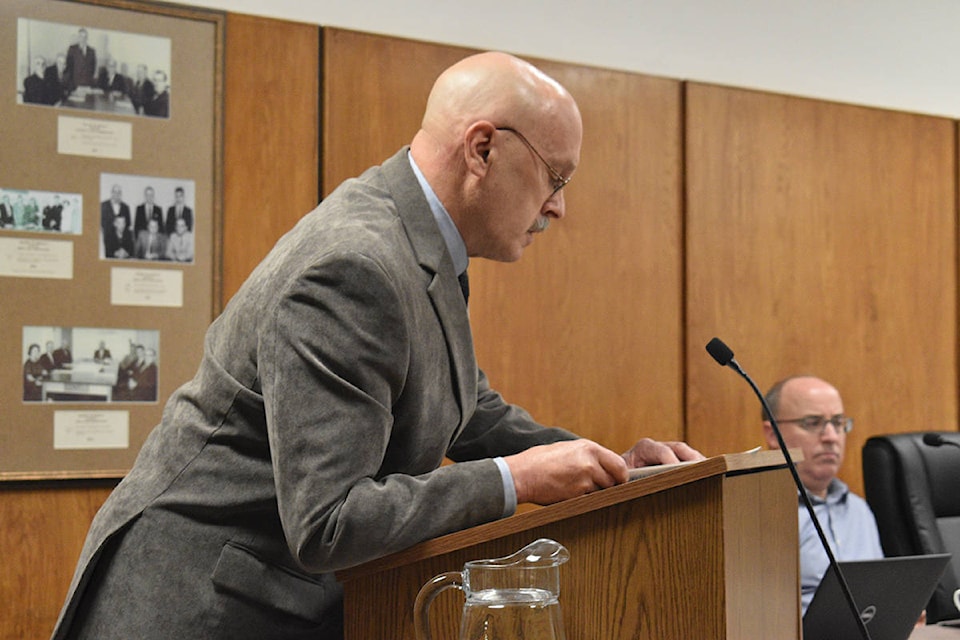A Terrace resident is asking the city to review its residential burn ban, calling the current year-wide restrictions too harsh to properly manage excess debris on forested properties.
Vince Heslenfeld says he has been burning on his property on the bench for the past 38 years, once or twice a year, to help decrease the chances of a forest fire.
“Up until two months ago, the [Terrace Fire Department] never received a complaint,” Heslenfeld says, noting that his neighbour’s property recently had all their trees cleared, making it easier for fires on his property to be seen.
“All owners of forested property should be encouraged to keep them clear of combustible debris,” he adds. “Our residential property burning ban accomplishes the exact opposite.”
Currently, burning is allowed in agricultural, commercial, industrial or rural zones areas with a permit, but not in residential areas, according to the Terrace Fire Prevention Bylaw. A permit may also be removed if the smoke proves to be a nuisance to neighbours.
It was originally introduced after a resident voiced concerns regarding the air quality in their area caused by the fire smoke. Heslenfeld says while it would have been reasonable to impose some restrictions then, a total residential ban was a step too far.
READ MORE: B.C. communities call for wildfire prevention help
“Imposing a fire ban causes many other problems, the unwanted wood just not just go away and it can’t be ignored either,” he says. “Homeowners now have to come up with other ways of dealing with the material they previously burned.”
Terrace’s fire chief and bylaw officer have given Heslenfeld two options to get rid of the excess material — either through curbside collection or to take the trimmings to the transfer station in Thornhill, which costs $70 to drop off.
In order for the material to be approved for curbside, Henslenfeld says he spent almost two days cutting up branches from one fruit tree and stuffing them into large paper bags for collection.
“I sustained repetitive strain injury to my hand,” he says. “By the way, this was just for one fruit tree — I have six.”
Heslenfeld requested that two burn days be introduced per year, one in the spring and one in the fall, published well in advance so those troubled by smoke can prepare.
“Without that, I would likely do as my neighbour did and get rid of all of the trees on my property,” he says.
READ MORE: Smoke keeps air quality risks for some B.C. regions, rain moves through others
Coun. Lynne Christiansen says implementation of a residential fire ban was a bit of a stretch, and may not hurt to have a look at the existing bylaw to make it more workable for people who have larger properties or acreages.
“It’s a bit of a hardship to expect [residents] to clear, gather, take [wood] to the dump and pay the amount for it,” says Christiansen. “Perhaps, in the middle of January when it’s wet enough and there’s no danger, that there should be some provision so they can have some time to do that burning on their own property.”
She added that burning excess branches or dry wood can be fire-preventative, and recalled a time in the 1900s when a forest fire engulfed the Bench area.
“We sure don’t want that now with the houses up there,” Christiansen says, acknowledging that any changes to the bylaw would come with recommendations from the city’s fire department and bylaw officer.
brittany@terracestandard.com
Like us on Facebook and follow us on Twitter
